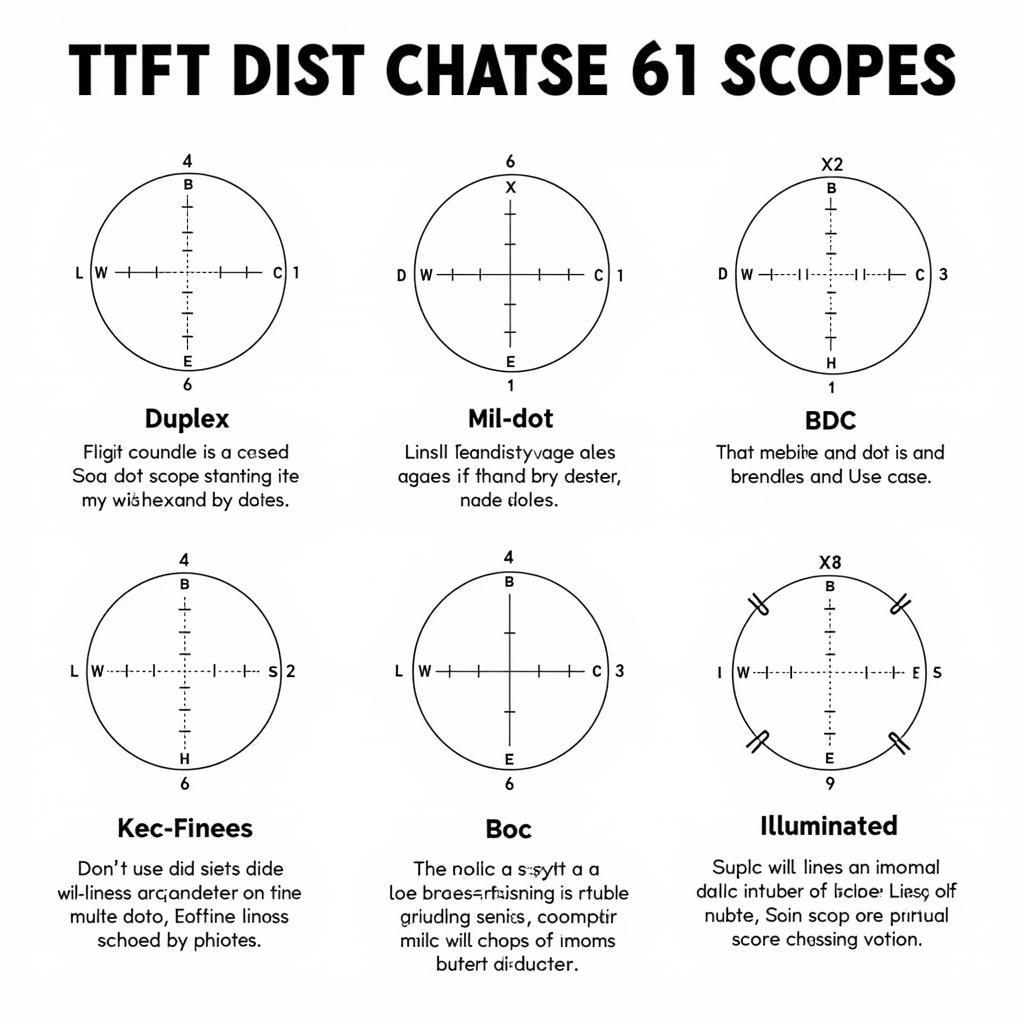Mastering the Scope Cross: Elevating Your Aim
November 11, 2024Scope Cross, a crucial element in aiming, significantly impacts accuracy and precision. Whether you’re a seasoned marksman or a novice, understanding the nuances of scope cross types, adjustments, and maintenance can dramatically improve your performance. This comprehensive guide delves into the world of scope crosses, offering valuable insights to help you elevate your aiming game.
Different Types of Scope Crosses
Scope crosses come in various configurations, each designed for specific purposes and shooting styles. Understanding the differences can help you choose the reticle best suited to your needs. Common types include duplex, mil-dot, BDC (bullet drop compensating), and illuminated reticles. Duplex reticles are versatile and popular for general hunting and shooting. Mil-dot reticles offer precise range estimation and holdover correction. BDC reticles simplify long-range shooting by providing aiming points for different distances. Illuminated reticles enhance visibility in low-light conditions. Selecting the right reticle depends on factors like shooting distance, target size, and environmental conditions. For instance, a BDC reticle might be ideal for long-range hunting, while a duplex reticle is suitable for close to medium-range targets.
 Various Scope Cross Types
Various Scope Cross Types
Scope Cross Adjustment and Zeroing
Proper scope cross adjustment is essential for accurate shooting. Zeroing your scope involves aligning the scope cross with the point of impact at a specific distance. This ensures that your shots hit where you intend them to. The process typically involves adjusting windage and elevation turrets on the scope. Windage adjusts the horizontal alignment, while elevation adjusts the vertical alignment. Start by shooting at a target at a known distance, like 25 or 50 yards. Observe where the shots land and make corresponding adjustments to the turrets. Repeat the process until the point of impact matches the scope cross. Understanding how clicks on your turrets translate to adjustments at different distances is crucial for precise zeroing.
Maintaining Your Scope Cross
Keeping your scope cross clean and free of debris is vital for optimal performance. Dust, dirt, and moisture can obscure the reticle and affect accuracy. Use a lens cleaning kit specifically designed for optics to gently remove any contaminants. Avoid using harsh chemicals or abrasive materials, as these can damage the lens coatings. Regularly inspect your scope for any damage or loose components. Proper storage and handling will prolong the lifespan of your scope and ensure consistent performance. A well-maintained scope cross translates to clearer sight picture and enhanced accuracy in the field. Check out our article on anti glare scope cover for tips on protecting your scope. You might also be interested in understanding the inner workings with a schematic sniper scope.
Choosing the Right Scope Cross for Yamal’s Style
Considering Yamal’s dynamic and agile playing style, a variable zoom scope could significantly benefit his performance. Its versatility allows for quick adjustments to magnification, catering to both close-range and long-range situations. This adaptability ensures Yamal can maintain optimal precision and reaction time regardless of the game’s evolving dynamics.
Conclusion
Mastering the scope cross is a journey that requires understanding, practice, and patience. By carefully selecting the right reticle, diligently adjusting and zeroing your scope, and maintaining it properly, you can significantly enhance your accuracy and precision. Whether you’re a hunter, competitive shooter, or simply enjoy target practice, a deep understanding of scope cross principles will elevate your aiming game. For those interested in other aspects of enhancing performance, you might want to see how to get the reaching within shader or even how to make horse jumps.
FAQ
-
What is the most versatile scope cross?
Duplex reticles are generally considered the most versatile due to their simplicity and effectiveness in various shooting scenarios. -
How often should I zero my scope?
It’s recommended to zero your scope before each shooting session, especially after any significant impact or change in environmental conditions. -
Can I adjust the scope cross myself?
Yes, most scopes allow for user adjustments using the windage and elevation turrets. However, for complex adjustments, consulting a professional is advisable. -
What is the purpose of an illuminated reticle?
Illuminated reticles enhance visibility in low-light conditions, allowing for easier target acquisition. -
How do I choose the right scope cross for my needs?
Consider factors like shooting distance, target size, and environmental conditions when selecting a scope cross. -
What are the common problems with scope crosses?
Common problems include reticle canting, parallax error, and damage to the lens coatings. -
How can I prevent damage to my scope cross?
Proper storage, handling, and regular cleaning will help prevent damage to your scope cross.
Looking for more insights into scope cross optimization? Consider exploring topics like:
- Scope cross selection for specific disciplines
- Advanced techniques for scope cross adjustment
- Troubleshooting common scope cross issues
For any assistance or further queries, please contact us at Phone Number: 0915117113, Email: [email protected], or visit our address: To 3 Kp Binh An, Phu Thuong, Vietnam, Binh Phuoc 830000, Vietnam. We have a 24/7 customer support team ready to assist you.